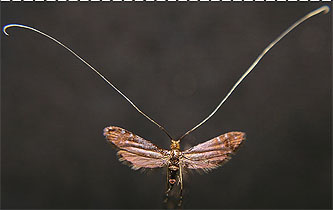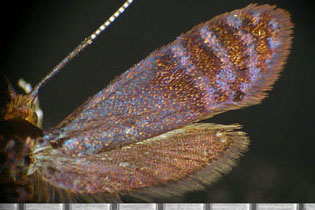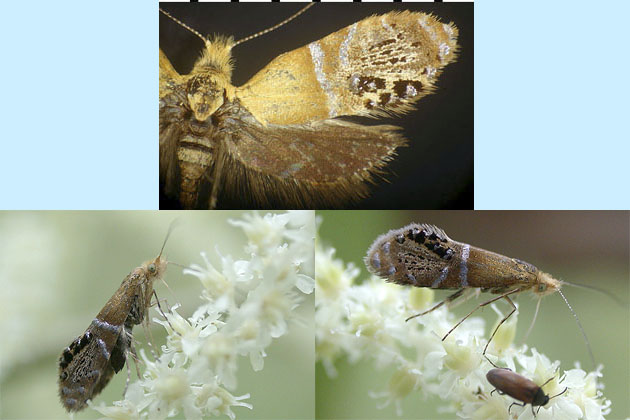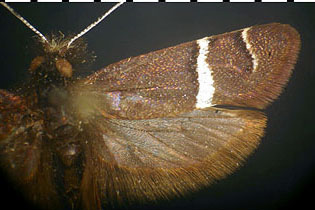
Adelidae is a small family, of which three species (all in the genus Adela) occur in Illinois. The Nearctic fauna was monographed by Powell (1969). Larval habits of most adelid species are unknown. In some species, the egg is laid onto a flower, and after hatching, the larva drops to the ground and lives in a portable case, from which it feeds on leaves, not necessarily of the plant species onto which its egg was laid. Male adult adelids (at least of most species) are known for their spectacularly long antennae (Fig. 1).

Figure 1. Adela caeruleella, showing the elongate antennae that are, in the majority of Adelidae species, characteristic of male adult individuals.
Adela caeruleella (Figs. 1, 2) is the commonest adelid species in Illinois. In the central part of the state, the adult appears during the last week of May. It occurs most frequently along trails that run through deciduous forest, where it shows a preference for sitting on flowers of black snakeroot, Sanicula marilandica (Apiaceae).

Figure 2. Adela caeruleella. Adult moth, collected diurnally on flower of black snakeroot, Sanicula marilandica (Apiaceae).
Adela ridingsella (Fig. 3) has been collected at light in June in Mason and Menard counties in Illinois. It appeared in 1995 and 1996 but has not been seen since.

Figure 3. Adela ridingsella. Adult. Top: specimen collected at UV light, Illinois (courtesy of J. Wiker); bottom, left and right: live moth, on flower of goat's-beard, Aruncus dioicus (Rosaceae), southern Canada; photos of live moth kindly provided by Dr. Jean-François Landry.
Adela purpurea (Fig. 4) has been observed once in Illinois, in Pope County (J. Wiker, pers. comm.).

Figure 4. Adela purpurea. Adult, collected diurnally.